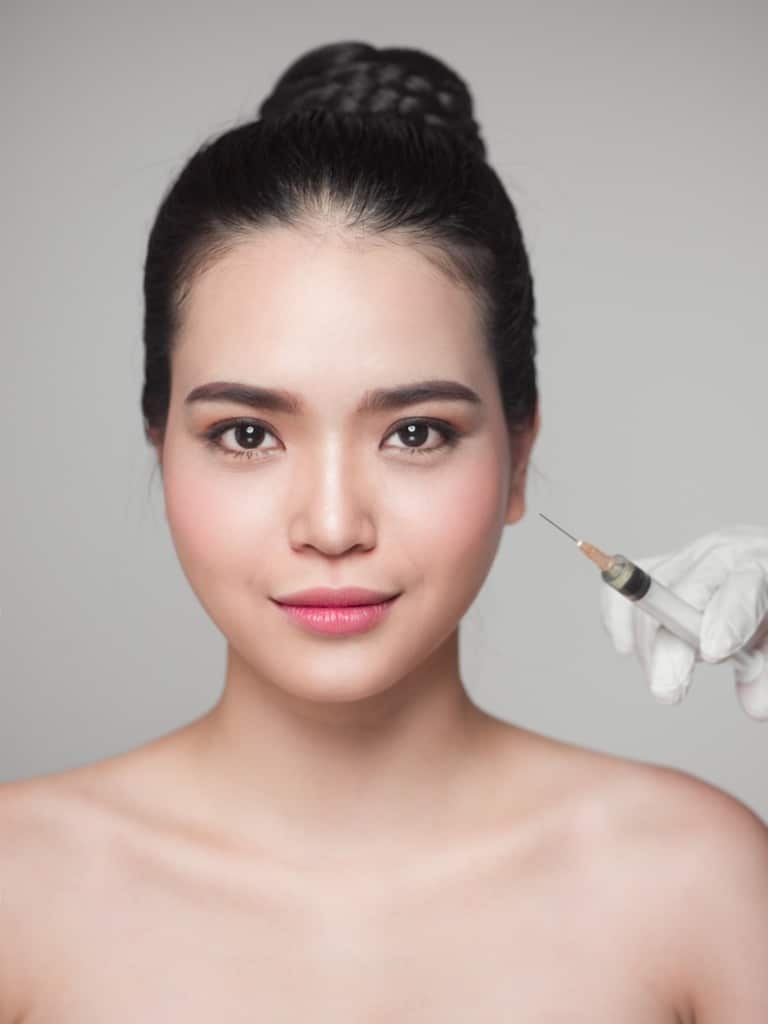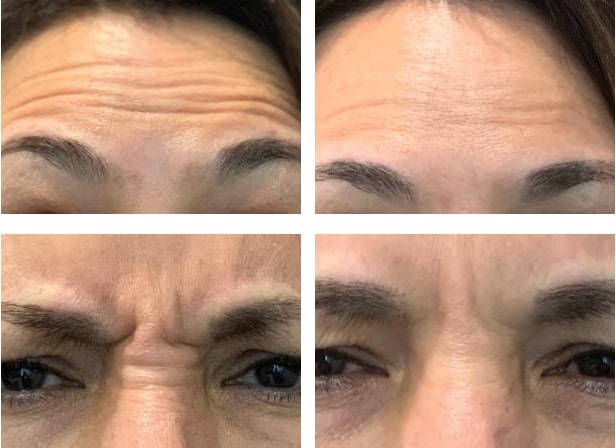Board-Certified Plastic Surgeons Serving Denver & Lone Tree, Colorado
Are cosmetic injectables safe?
The neuromodulators and dermal fillers we use at Park Meadows are all approved for use by the FDA and other health organizations around the world. All have been injected millions of times worldwide and have proven to be safe and effective.
The injection of Botox® (and other neuromodulators such as Xeomin®) has been the most popular cosmetic procedures, surgical or nonsurgical, every year since the FDA approval of Botox® for cosmetic use in 2002. The only real risk involved with neuromodulators is an injection into the wrong muscle, which can lead to issues such as a droopy eyelid. This isn’t a problem for our Park Meadows patients, as our board-certified surgeons perform all of our neuromodulator injections.

As for dermal fillers, we use almost exclusively hyaluronic acid-based fillers (the only exception being Radiesse®). Because hyaluronic acid is a substance that is found naturally in the human body, reactions of any sort are quite rare with these fillers. The main risk with fillers is the development of granular lumps. These can be easily addressed by the injection of an enzyme known as hyaluronidase. This simply neutralizes the hyaluronic acid in the dermal filler, eliminating the lump.
Otherwise, all injectables patients can have some slight redness and swelling at the injection sites. This generally passes in a day or so.
How long do facial fillers last?
The dermal fillers we use at Park Meadows have different lifespans. Generally, they last from 6 months up to 2 years. Sometimes the location of the injections affects longevity, as areas that require more movement, such as around the mouth, tend to absorb the fillers more quickly than static areas such as the cheeks.
Which dermal filler is right for me?
The choice of dermal filler is a direct relationship to the location of your wrinkles. For instance, if you want to return the volume to sunken cheeks, Juvéderm® Voluma is unbeatable. If you want to add subtle volume to augment your lips, Juvéderm® Volbella is the answer. Belotero Balance® is great for deeper creases, such as nasolabial folds.
When you come in for a consultation, we’ll get a feel for the areas and issues you want to address with dermal filler injections. With that knowledge, we can then recommend the right filler or fillers.
How is Botox different than dermal fillers?
While the end goal may be the same, to erase or dramatically reduce the appearance of wrinkles, creases, and areas of volume loss, dermal fillers and neuromodulators go about it in entirely different ways.
Dermal fillers, as their name implies, “fill” a wrinkle from beneath. They are classified as either “natural” or “synthetic” fillers. They work on “static” wrinkles — these are the wrinkles that are on display at all times, such as nasolabial folds or lip lines.
Natural fillers such as Juvéderm® and Belotero Balance® are made mainly from hyaluronic acid. Hyaluronic acid is a naturally occurring substance in our bodies that is responsible for hydrating and plumping the skin. It does this by binding with nearby water molecules.
Synthetic fillers, such as Radiesse®, are made with synthetic substances. They use structural support elements, such as calcium microspheres, to provide an artificial structure where injected. Many synthetic fillers also trigger the body to produce new supplies of collagen (the protein responsible for creating the skin’s structural framework) as a secondary aspect of skin firming.
Neuromodulators are completely different. Botox® (and Xeomin®) is made from the botulinum toxin type A. This is the bacterium responsible for botulism, which sounds scary, but it’s not. Way back in the 1950s doctors discovered that when injected into a muscle in minuscule amounts, the botulinum toxin temporarily stopped the muscle from contracting. It does this by blocking the nerve signal from the muscle to the brain, so the brain never signals the muscle to contract. This proved helpful when used to stop involuntary muscle contractions in the eyelids and some other areas. But when Botox® was approved for the treatment of facial wrinkles it became incredibly popular and is a worldwide aesthetic legend.
Botox® works on what is called “dynamic” wrinkles. These are the wrinkles that form on the skin surface when we make certain expressions, such as frowning or squinting. These occur on the upper third, the expressive, area of the face. Over time, making these repeated expressions begins to form wrinkles around the eyes (crow’s feet), between the brows (the 11s), and on the forehead. But when Botox® is injected into the muscle that forms the wrinkle on the skin above, it stops the muscle from contracting, so the wrinkle above never forms.
What results can I expect from Botox or Xeomin injections?
As mentioned above, neuromodulators only work on wrinkles created by muscle contractions under the skin. These occur on the upper third of the face, the expressive area of the face. Botox® injections erase wrinkles that form at the outside of the eyes (crow’s feet), the lines that develop between the eyebrows (frown lines/the 11s), and on forehead lines.
Once injected, the botulinum toxin doesn’t deliver immediate results; it takes about 4 days for it to fully relax the injected muscle. From there, both Botox® and Xeomin® provide results for from 4 to 6 months. At that point, the body will begin to absorb the now-inert botulinum toxin and the muscle creating the wrinkle on the surface skin will begin to contract again. Another Botox® or Xeomin® session will maintain your results.
Botox Injection Before & After

Is there recovery time with cosmetic injectables?
There isn’t recovery with either Botox® or dermal fillers. You can get right back to your normal activities. After Botox® or Xeomin® injections, the patient needs to refrain from pushing on the injection sites for 24 hours. This allows the botulinum toxin to settle in and get to work.
What is Botox (and Xeomin) made of?
Botox® is made primarily of the botulinum toxin type A. This is the same bacteria that cause botulism, but as described above, when injected in minuscule amounts the toxin simply keeps a muscle from contracting for a period of time. Botox® also has a few added proteins in its formula. Xeomin®, on the other hand, is only the botulinum toxin. That’s why it is often referred to as the “naked injectable.”
How often will I need Botox injections?
Botox® relaxes muscles and the wrinkles that form above them for from 4 to 6 months. The metabolism of the patient influences the duration of the neuromodulator. But it’s a good plan to expect to need more Botox® or Xeomin® every 4 to 6 months. Repeated use of these injectables creates less need in future years, as the muscles stay more relaxed at all times.
Schedule a Consultation Today
If you're interested in learning more about cosmetic injectables please contact us for a consultation at 720-457-4471 or fill out our contact us form below. We will discuss your needs and concerns, and determine your best course of action.
